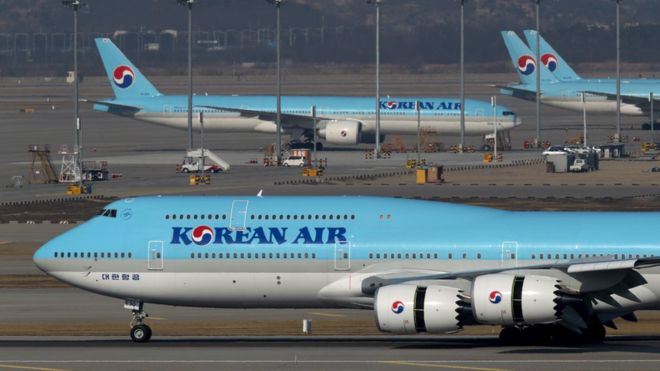Korean Air will suspend the Busan-Osaka route (14 flights a week) from Sept 16, as well as Jeju-Narita (3 flights a week) and Jeju-Osaka (4 flights a week) from Nov 1.
The airline will also temporarily suspend some of its other Japan routes. Incheon-Komatsu (3 flights a week) and Incheon-Kagoshima (3 flights a week) will be suspended from Sept 29 to Nov 16, and Incheon-Asahikawa (5 flights a week) will be suspended from Sept 29 to Oct 26.
For Incheon-Osaka/Fukuoka routes, both routes currently have 28 flights a week, and the frequency will be decreased to 21 flights a week between Oct 27 and Nov 16. The frequency of Incheon-Okinawa will be reduced from seven to four flights a week, and Busan-Narita/Fukuoka from fourteen to seven flights a week, between Sept 29 and Nov 16.

Korean Air to reduce flights to Japan (Cre: BBC).
In the meantime, Korean Air plans to strengthen its route competitiveness by focusing more on other markets, such as Southeast Asia, Oceania, and China in the winter season.
To begin with, Korean Air will launch a new daily route to Clark, Philippines, starting from Oct 27. The airline will also add four more operations a week for Incheon-Chiang Mai/Bali, increasing the number of flights per week to eleven. In Oceania, the frequency of the Incheon-Brisbane route will be increased from five to seven flights a week.
Korean Air also plans to start direct thrice-weekly flights from Incheon to Zhangjiajie and Hangzhou in China, and Incheon-Nanjing four times a week. The service between Incheon and Beijing will be operated 17 times a week, up from the previous 14 a week.
In other changes, Korean Air will boost the frequency on some domestic routes. It will launch a new service between Pohang and Jeju seven times a week, and the Ulsan-Jeju flight will be operated seven times a week, an increase of two flights a week.
The schedule updates are subject to government approval.
Cre: Japan Today
Nguyen Mai Huong-COMM










